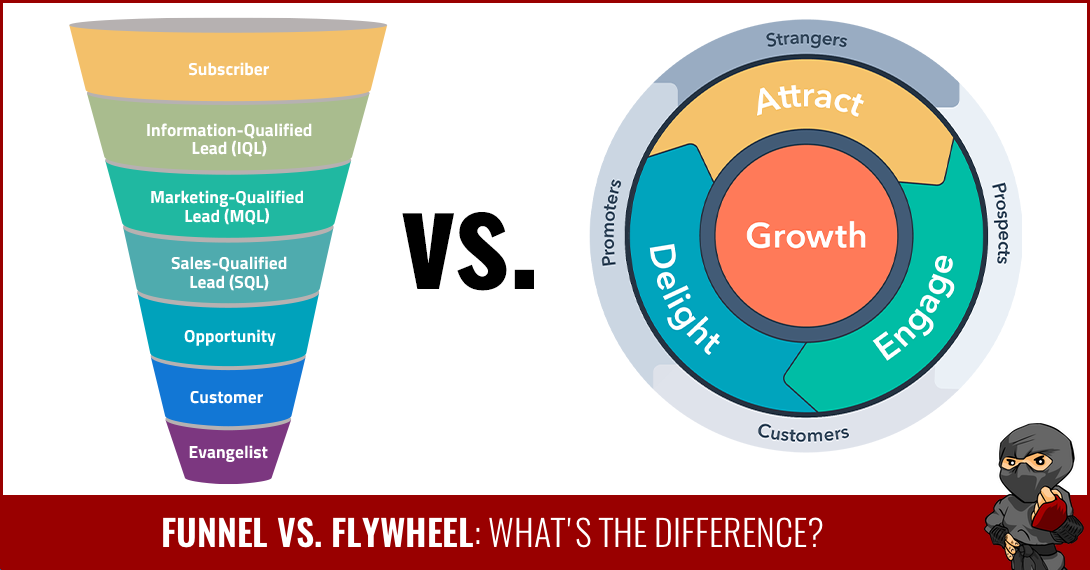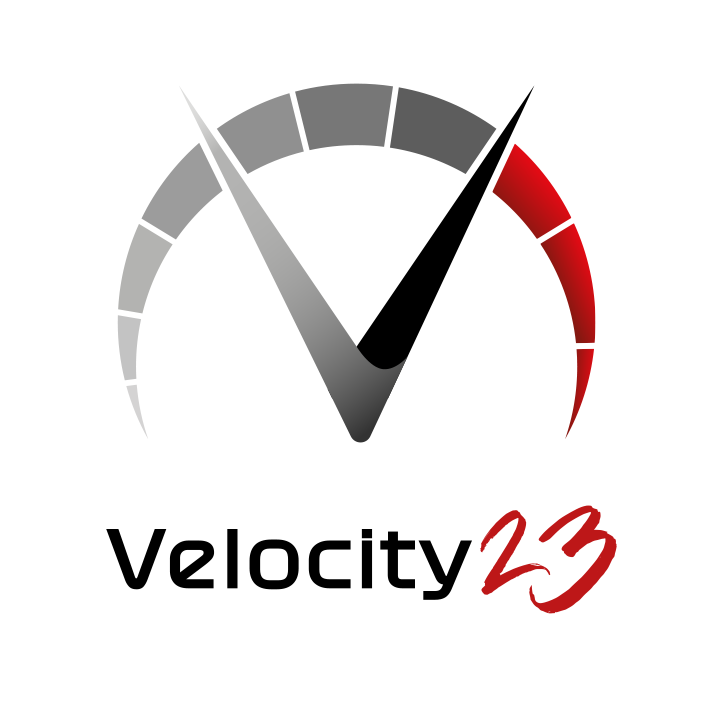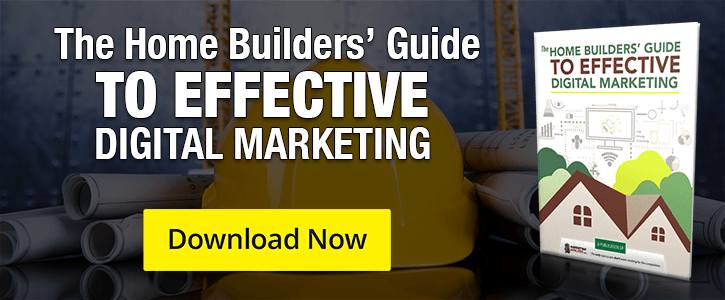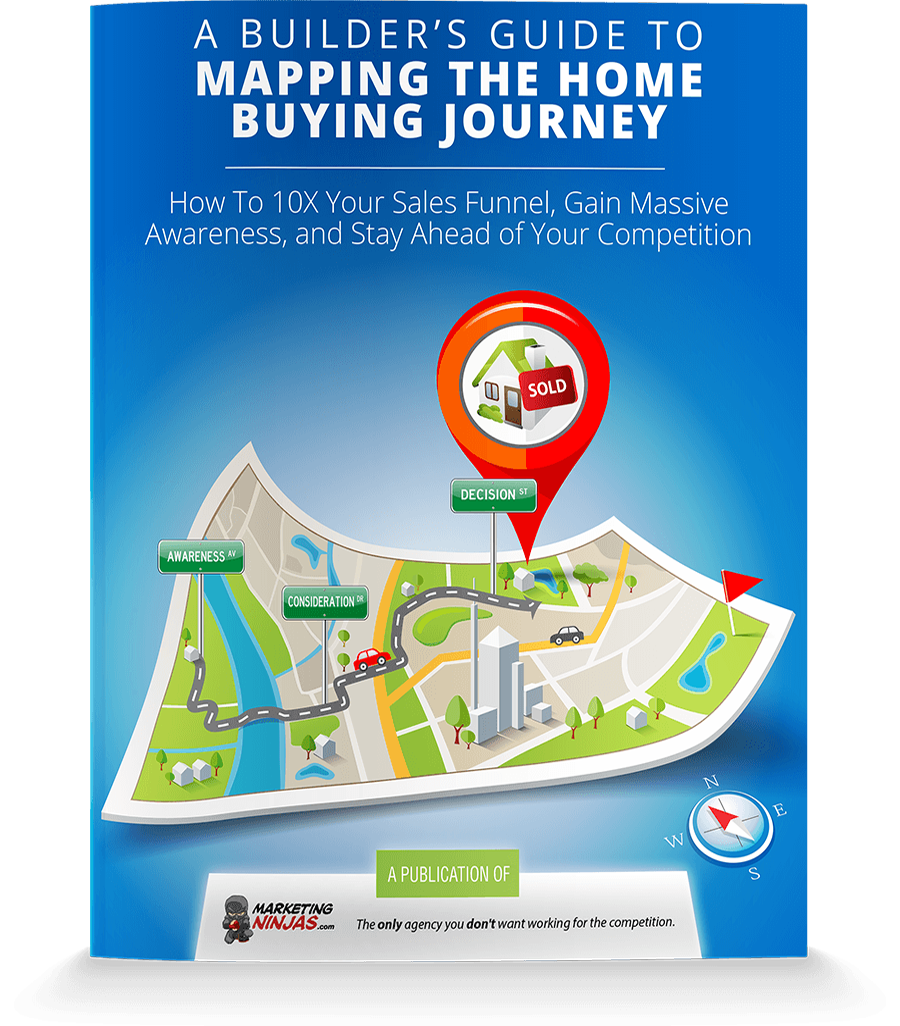Funnel vs. Flywheel: What’s the Difference?
If you’ve been working on a content marketing strategy for a while, you’ve undoubtedly heard of the marketing funnel. This is the method by which you offer solutions to prospects at every stage of the buying journey, then funnel them along your sales path until they eventually turn into customers.
This image has been a helpful visual of the process, but it’s not as effective as it could be.
Reading time: 5 minutes
Level: Intermediate
Key Takeaways:
- Think of the marketing flywheel as the gear that keeps your business growing and moving forward at the end of each customer’s journey
- The flywheel is always spinning, and there are things you can do to reduce friction to make it move faster
- The Delight stage of the flywheel is so important for home builders because customers who share positive experiences will influence more people into your Attract stage
Enter the flywheel.
This is the brainchild of the marketing thought leaders at Hubspot, and it’s a great concept that’s going to transform the way you think about the marketing process.
What Is the Flywheel?
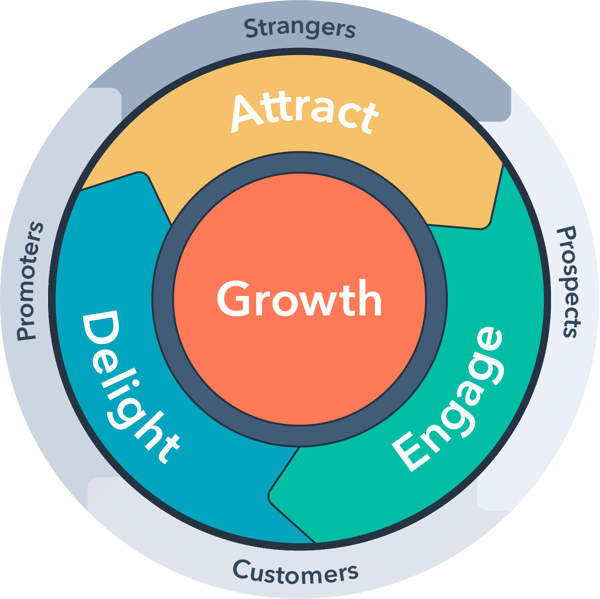
The marketing flywheel is visualized as a circle or wheel. At the center of the wheel, you’ll find the idea of growth. Around the wheel, there are three segments representing actions that all lead into each other:
Attract
This is where you attract the attention of the prospects, so that they start to know what your business is about.
Engage
This is where you encourage them to buy your product by making it easy to choose your company
Delight
This is where you support the customer post-purchase, making sure that they have a positive experience.
At the outer edge of the flywheel, there’s a note about the type of people you have at each stage. Through most of the attract phase, you have “strangers”. These strangers turn into “customers” at the Engage and beginning of the Delight phase. Then they become “promoters” that lead you to more strangers for your Attract phase.
The Addition of Movement
Just the name “flywheel” gives you a feeling of movement, and this is one of the biggest changes from the marketing funnel. In any funnel, whatever you put in gets pulled down by gravity, and it’s a little bit like that in the marketing funnel. We expect the prospect to just naturally move through each stage of the funnel.
The flywheel, though, is constantly spinning. Its circular nature better shows the importance of the customer in the sales process. Now, some versions of the funnel do have an arrow that goes from the end of the funnel back up to the top to show that customers do help put more people into the funnel, but it’s not at the center of the experience.
The flywheel better represents how important enthusiastic customers are to the process.
In the flywheel model, prospects seeking knowledge are able to quickly get the information they need. This turns them into customers, and the value of the product and service turn them into enthusiastic supporters. They then recommend the product or service to others, and the wheel keeps spinning.
What This Means for Home Builders
Think about it. When you’re interested in making a new purchase, do you always turn to Google first? Probably not.
More and more people are putting out calls to their social networks. You might turn to Facebook, for instance, and ask, “What can I do to make my bedroom warmer?” and you’ll get a bunch of responses with different ideas, from redirecting the airflow in your heating ducts to buying a space heater to getting an electric blanket. Among these general ideas, some people are going to recommend very specific products, and those people are keeping the flywheel moving for those companies.
 Customers who are happy with the home they bought from you are going to play a big role in attracting new prospects.
Customers who are happy with the home they bought from you are going to play a big role in attracting new prospects.
Not only will they be able to talk about their experience to people who are actively thinking about buying a new home, but simply inviting friends over for a get-together is exposing people to the quality of your work. When these guests see how nice their friend’s new home is, it starts the wheels turning in their head. They start to think maybe a new home is right for them. They’ll ask a lot of questions of their friend (your client). The responses are either going to drive them toward or push them away from using you.
What do you want them to hear about your company? Act in ways that will encourage positive comments.
Force and Friction
How fast is your flywheel going to spin? It’s going to depend primarily on two things:
- how hard you push it (more force = faster spin) and
- how much friction there is (less friction = faster spin)
The force you put into your flywheel are the things that can turn the prospect into a customer more quickly. Things like available quick possession homes, affordable pricing, special features, great customer service, and promotions are examples of forces home builders like you can use to spin the flywheel faster.
On the flip side, friction slows down your sales. These are the things that can hold someone back from making a purchase, such as long build times or lack of homes in desirable areas. Your goal is to remove this friction. For instance, to get rid of the friction of long build times, you should make sure to always have a good selection of quick possession homes.
The flywheel is an exciting new concept for the marketing process that can help you better understand the role that you and your customers play in the process. Schedule an appointment today with Velocity23, and we’ll help customize a flywheel for your business.

